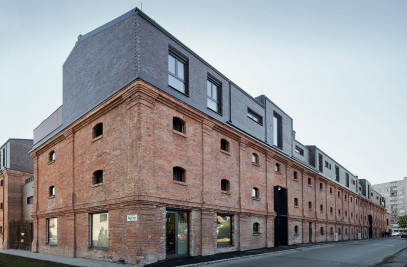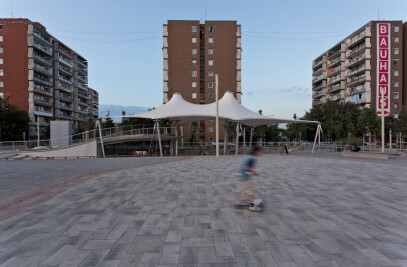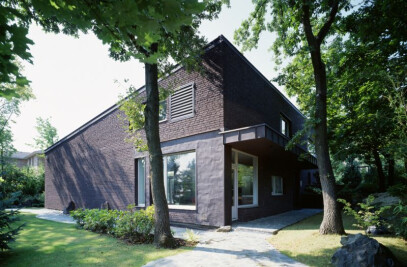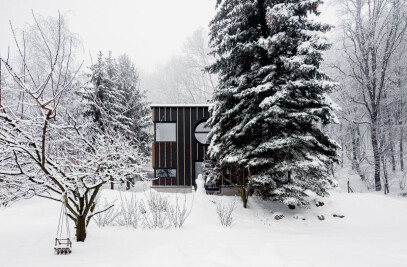The 21st century architecture of (public) transport creates community spaces that cater for the needs related to local and global locomotion. Today, heavy-traffic structures related to transport infrastructure fall outside the categories of traditional industrial or public buildings. It is the architects’ task to define these new types of spaces as genuine, valuable public spaces. Transport functions and the associated structures of civil engineering must not be obstacles but opportunities and inspiration for architectural thinking. All our decisions serve the principle that travellers shall be able to access basic functions via the simplest and shortest (i.e. most efficient) route possible, while staying and moving in a genuine public space. In our design we have met all the criteria of the highly intricate and complex Design Program and ensured that pedestrian traffic does not intersect the paths of motor vehicles and bicycles, and the latter two do not intersect each other’s paths either.
Answer No 1. – P+R ABOVE THE TERMINAL
Our proposal involves a spatial relocation of the car park. Moving the car park to the top of the Terminal has several advantages: • The built-up area is reduced and the green area is increased; • Reduced heat stress of both functions and, consequently, improved energetics; • Shorter, more direct connection between the two functions: both the Bus Terminal and the Underground Railway can be accessed quickly and easily through the vertical access routes; • Considerable freedom in the creation of an ideal traffic flow system for the Bus Terminal.
The vehicle traffic of the Car Park is served by offset, one-way external ramps, one for incoming (ascending) and one for outgoing (descending) vehicles. The traffic system of the Car Park is fully adaptable. The use of intelligent access control and information systems based on the data supplied by the one-way ramps and the occupancy sensors installed to the parking spaces ensures that the Car Park can effectively handle the surges experienced during the morning and evening rush-hour periods.
Answer No 2. – A TERMINAL WITH A RING ROAD
To create the huge front elevations specified in the Design Program and required by the terminal layout we designed a two-story, circular building. The main advantages of this approach are as follows: • A long front elevation combined with a compact bulk; • The central space has a clear, transparent arrangement from every direction and facilitates simple visual orientation; • Access roads leading to the bus drop-off and boarding bays are short and the bays are at a democratically equal distance from the centre of the building and can, therefore, be reached quickly; • A public space with generous dimensions is created.
Phase II In our competition entry we had to come forward with architectural proposals for the long-term development of both the Terminal Building and its wider environment. The Intermodal Centre should be the catalyst of long-term development on the one hand and also the beneficiary of the growth it generates on the other. The Terminal plays an important role with its functions (underground and bus terminal, P+R parking facility) and its location alike. In view of the above our proposal involves a large-scale future spatial and functional development of the Terminal Building. The second phase would be erected on top of the Car Park built in the first stage, as an organic extension thereof. The functions that could be integrated are highly diverse, realistically including offices, hotels and services in the first place, and also an appropriate extension of community functions. The upstairs floors of the building could accommodate a restaurant, a viewing terrace and even sports facilities.

































